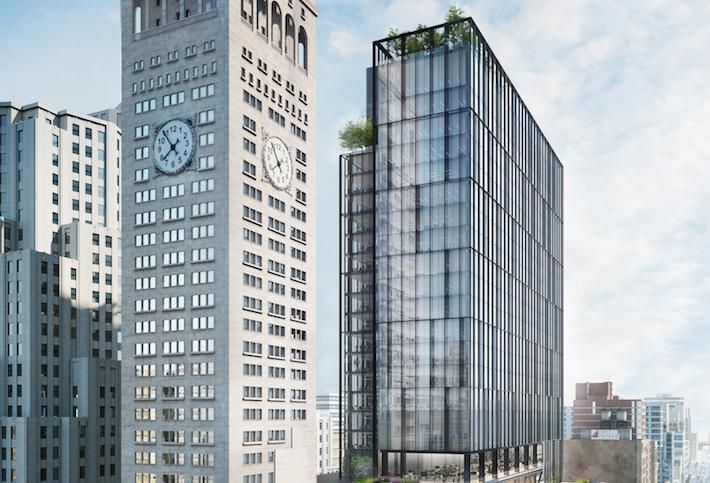Key investors in SoftBank Group Corp.’s giant tech fund have balked at a planned $16 billion investment in co-working startup WeWork Cos., leaving SoftBank Chief Executive Masayoshi Son to find an alternative as his ambitions hit up against the limits of his financial firepower.
Government-backed funds in Saudi Arabia and Abu Dhabi, according to people familiar with the matter, have told SoftBank executives they have concerns about SoftBank’s negotiations to buy a majority of money-losing WeWork, whose industrial-chic workspaces and short-term leases have made it one of the world’s hottest startups.
SoftBank’s Vision Fund is already a major investor in WeWork after acquiring nearly a fifth of the company last year with an investment of $4.4 billion at a valuation of $20 billion. SoftBank subsequently committed another $4 billion, including a $3 billion commitment last month at a $45 billion valuation. The new investment would value WeWork at around $36 billion, the people said, and would bring SoftBank and its affiliates’ total investment in the company to more than $24 billion.
Saudi Arabia’s Public Investment Fund, or PIF, and Abu Dhabi’s Mubadala Investment Co. contributed the bulk of the nearly $100 billion raised by the SoftBank Vision Fund. Their size gives them an effective veto over certain investments and a loud voice in validating Mr. Son’s moves.
The pushback against the new WeWork deal is unusual for the freewheeling Mr. Son, who typically gets to invest as he pleases. The 61-year-old executive has transformed SoftBank from a stodgy Japanese cellphone provider into one of the most influential technology investors in the world, bending investors to a vision based more on instinct than traditional financial analysis.
Some of the people said that PIF and Mubadala have questioned the wisdom of doubling down on WeWork, and have cast doubt on its rich valuation. The company is on track to lose around $2 billion this year, and the funds have expressed concern that WeWork’s model could leave it exposed if the economy turns down, some of the people said.
PIF and Mubadala are both heavily invested in real estate, and have told SoftBank executives they would prefer the fund stick to technology bets, some of the people said.
The deal under discussion would include $10 billion from SoftBank to buy out most existing outside shareholders, plus another $6 billion in new capital for WeWork over the next three years, according to people familiar with the matter. The deal would leave WeWork Chief Executive Adam Neumann with control of the company, one person said. The companies are hoping to announce the deal early next year, although talks are fluid and it could still fall apart.
Mr. Son still hopes the sovereign funds will let the Vision Fund pay for some of the deal, one of the people said. SoftBank is considering other ways to fund the deal, including using its own cash, raising debt and bringing in outside investors, the person said. It may use the proceeds from the initial public offering of its Japanese telecom business.
SoftBank already carries heavy debt: nearly Yen18 trillion, or roughly $158 billion, as of Sept. 30
Mr. Son, who has backed other companies including Uber Technologies Inc. and Indian e-commerce company Flipkart, has occasionally encountered skepticism from his investors and board members, but generally they have gone along.
The pushback from Mubadala and Saudi Arabia’s PIF shows Mr. Son is testing his most enthusiastic backers. It also raises questions about the broader risk appetite of investors who have thrown money at fast-growing startups, no matter how unprofitable, in hopes of future profits.
Under the deal being discussed, SoftBank would buy out existing investors at a valuation of around $22 billion, subject to a shareholder vote. The additional money put into the company would come in $2 billion chunks in each of the next three years at a higher valuation, the people said.
The Wall Street Journal first reported the WeWork talks in October.
Beyond its massive size, the prospective deal would be unusual in that it would leave Mr. Neumann in control of WeWork despite the fact that SoftBank would own most of the company and provide the new capital. Mr. Neumann currently controls WeWork’s board, and his shares give him 10 times as many votes as other investors’ shares, according to company filings. As of late last year, he controlled a limited liability company that owned 30% of WeWork.
WeWork has spent years marketing itself like a tech company, and Mr. Neumann has compared it to Amazon.com Inc., saying that office space is to WeWork what books were to Amazon: just the beginning.
Some analysts say it more closely resembles an old-school office-leasing company, and have warned that if demand for office space and rent prices fall, WeWork could be stuck with fixed-rent leases for 10 to 15 years.
If WeWork becomes a huge hit, it would bolster Mr. Son’s record of prescient bets, and be a boon to SoftBank’s shareholders. Mr. Son invested $5 million with Chinese entrepreneur Jack Ma for a fledgling e-commerce company, Alibaba, that went on to become a behemoth.
WeWork has spent heavily on new office space as it has grown. While executives years ago predicted strong profits by now, losses have recently grown faster than revenue. WeWork took in $1.2 billion in revenue in the first nine months of the year, but spent twice as much, posting a $1.2 billion net loss. WeWork has said the losses reflect heavy investment in growth, and individual offices are profitable once they are leased.
The deal talks come at a turbulent time for SoftBank and Saudi Arabia, which committed $45 billion to the Vision Fund. The Saudi connection to the murder of journalist Jamal Khashoggi and the war in Yemen have sparked a growing backlash against the kingdom and its crown prince, Mohammed bin Salman.
A few venture capitalists and a Democratic congressman representing Silicon Valley, Ro Khanna, have called on companies to reject Vision Fund money.
![Other 5 Bank of China Lends $253M to Vornado REIT to Refi Rego Park Mall in Queens [Updated]](https://nyocommercialobserver.files.wordpress.com/2018/12/Other-5.jpg?w=615&h=431)


